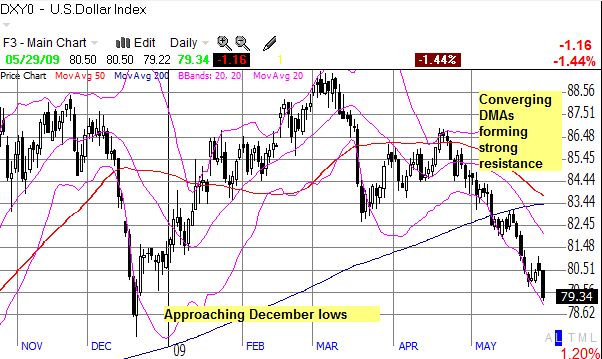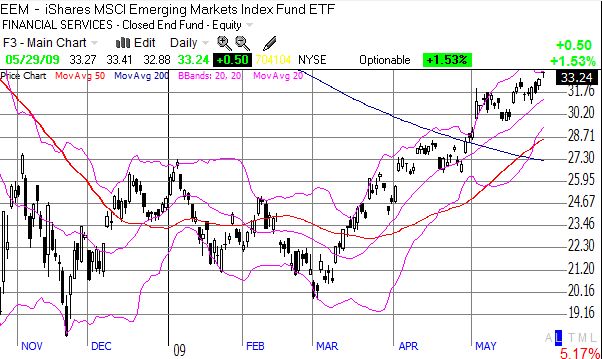Almost three weeks ago, I pointed out that the dollar's break below its 200-day moving average (DMA) likely signaled more weakness to come. Sure enough, the dollar's weakness has been confirmed, and it now rapidly approaches its December lows. Not even renewed nuclear darma in North Korea could prop up the dollar for more than a flicker. From a technical standpoint, the 50DMA is pointed downward on a collision course with the 200DMA that should also point downward within a week or so. The two moving averages together will form strong overhead resistance. The sheer intensity of the dollar selling on Friday suggests that any near-term relief rallies in the dollar should be too weak to overcome this resistance.

I noted earlier that the last break of the dollar's 200DMA occurred in early 2006 and preceded a strong two-year sell-off in the dollar. The selling ended in the spring and summer of 2008 at multi-decade lows. Once the dollar breaks below the December lows, a retest of the multi-decade lows should happen sooner than later. With a rapidly growing chorus of voices declaring the U.S. recession over or near over, the dollar's slide will be greased by the continued erosion of the fear premium that has kept the dollar artificially high since September. (I realize it seems backwards that expectations for a stronger U.S. economy will lead to a weaker currency but that is where we are in this wacky economic environment). A break of the multi-decade lows may depend on whether the Federal Reserve and the Treasury are still adamantly and aggressively fighting off the (fading?) deflation bug with more printed dollars, more government debt, and more quantitative easing. I strongly suspect the fear of slipping back into a deep malaise will overwhelm any meager qualms over inflation risks. Another wildcard could be currency intervention by the Europeans and/or Japanese who might fear that their weak economies cannot accommodate strength against the U.S. dollar (akin to the competitive devaluation the G20 pledged to avoid last month).
May's rapid descent in the dollar has coincided with a flattish and choppy performance in the U.S. stock market the past few weeks. One reader pointed out to me that this means the U.S. stock market has finally begun a correction in real terms. The dollar is down 6% for May, so we are talking a very slight reversal that no one within these borders will notice...for now. The dollar selling HAS been good for foreign stock markets, especially emerging markets, as capital seeks higher returns in riskier places. The EEM, iShares MSCI Emerging Markets Index Fund ETF, rallied another 10% in May, twice the percentage performance of the S&P 500's 5% return.


The weakening dollar has of course boosted commodities across the board. In particular, gold is nearing its 2009 high (I am STILL waiting for the break above $1000/oz), silver has made new 2009 highs and is up a nice 38% for the year, and oil is pressing $70/barrel despite a continued abundance of supply. Unfortunately, commodity inflation has not translated into housing inflation, wage inflation, or more jobs. In other words, the fight against deflation is inflicting insult upon injury on the average American consumer and taxpayer. (I will refrain from renewed predictions of stagflation...for now).
Be careful out there!
Full disclosure: long SDS, SSO calls, EEM calls, GLD, SLV, and USO. Long XHB puts. For other disclaimers click here.